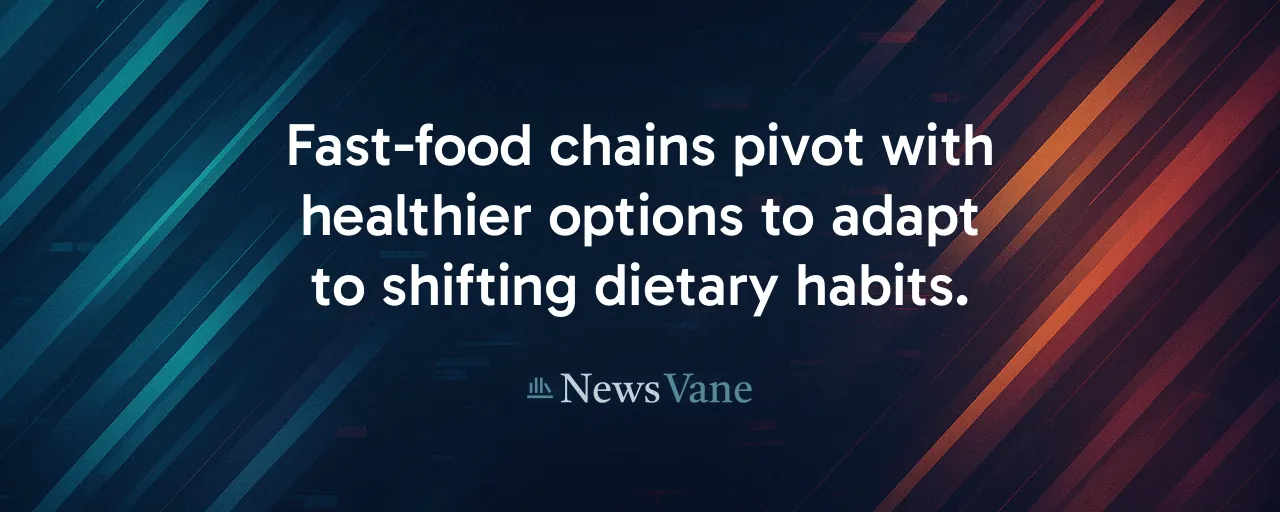Appetites in Flux
Fast-food restaurants thrive on bustling crowds, with drive-thrus humming and counters packed. Yet, a quiet shift is underway. GLP-1 medications, designed for diabetes but now popular for weight loss, are curbing appetites across the country. Drugs like semaglutide reduce hunger, leading users to skip calorie-laden meals. Analysts at Redburn Atlantic project that 7 million McDonald's customers may use these drugs, potentially trimming sales by 0.9% at McDonald's, 1.2% at KFC, and 1.4% at Domino's.
The surge in GLP-1 use has caught many by surprise. From 2019 to 2023, non-diabetic users skyrocketed by 730%, with one in eight U.S. adults now on these medications. Forecasts point to 24 million users by 2035. This trend reaches beyond personal health, rattling industries built on eating habits. Fast-food chains, synonymous with quick indulgence, now face a challenge that demands a fresh approach.
Sales Under Pressure
The impact is measurable. GLP-1 users consume 20-30% fewer calories and spend 31% less on groceries. For fast-food chains, this means fewer visits and smaller orders. Data shows an 8.6% drop in spending at quick-service restaurants among users, with customer traffic dipping as people gravitate toward lighter fare. McDonald's, KFC, and Domino's could see modest sales declines over the next decade if these patterns persist.
Consumer behavior is shifting in profound ways. Restaurants known for hearty meals now face customers who eat less. Some analysts caution that the effect may be limited, with only 6% of lower-income and 10% of higher-income consumers likely to use GLP-1s. Still, even a small slice of a vast customer base can disrupt revenue, pushing companies to rethink how they attract and retain diners.
Pivoting to Stay Relevant
Fast-food leaders are responding with action. McDonald's is testing nutrient-focused options, like high-protein wraps, while KFC explores grilled offerings and Domino's experiments with vegetable-heavy pizzas. Digital tools, such as apps that tailor promotions, aim to keep customers engaged. The $428.8 billion ready-meal market offers inspiration, with plant-based, low-carb, and eco-friendly products gaining traction among health-conscious eaters.
These changes come with risks. Smaller portions or reformulated recipes could turn off longtime fans who cherish familiar flavors. Chains navigate innovation while preserving their core appeal, a delicate balance in a wellness-driven era. Some experts believe this shift could make brands stronger, equipping them to meet evolving consumer demands while staying true to their roots.
Health Policy in the Spotlight
The GLP-1 wave is fueling broader discussions about healthcare and fairness. Proponents of expanded drug access argue that covering these medications under Medicare could save $175-245 billion over ten years by cutting obesity-related medical costs. Bipartisan proposals aim to end Medicare's ban on weight-loss drug coverage, viewing obesity as a medical condition. Others, however, advocate for lifestyle-based solutions, citing concerns about over-reliance on drugs.
Equity is a central issue. Those pushing for fair healthcare access call for affordable pricing and prioritized coverage for vulnerable groups, noting obesity's disproportionate impact on underserved communities. Meanwhile, those focused on fiscal restraint highlight the need to manage rising Medicare costs. Both perspectives underscore a shared goal: adapting to a future where weight-loss drugs play a major role.
A New Era for Food and Wellness
Fast-food chains face a defining moment. Giants like McDonald's, KFC, and Domino's have navigated challenges before, from economic downturns to changing tastes. Now, they confront a subtler shift: a society eating less. A projected $48 billion drop in food spending over the next decade looms, alongside a significant chance to reinvent. Nutrient-rich ingredients, smaller servings, and sustainable packaging could reshape the fast-food landscape.
Medication offers a path to health improvements, yet broader lifestyle shifts are also required. Policymakers face tough choices, weighing innovation against budget constraints. These debates will influence how society addresses obesity and wellness for years to come.
As fast-food restaurants adapt and menus evolve, one reality stands out: transformation is underway. The question is how the industry will balance its legacy with the demands of a health-focused future, and whether it can remain a cultural touchstone while embracing change.
